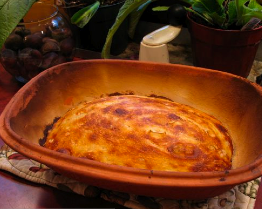I read this marvelous book, Privatopia, about Common Interest Developments, or CIDs, some time back. CIDs go by various names, condo associations, gated communities, etc. They are a form of government that lie in the vast gray zone between real government and purely private ownership; i.e. where the club goods hang out. One of the stories he tells is how there are a handful of constituencies at the table: developers, community managers, owners, service providers (lawyers, landscapers, agents), local governments, etc. That as time has passed the community managers have come to dominate the governance of the communities. They are little kings, and what they care most about is keeping a lid on things. I was reminded of that story when reading this newspaper article about:
DENVER, Colorado (AP) — A homeowners’ association in southwestern Colorado has threatened to fine a resident $25 a day until she removes a Christmas wreath with a peace sign that some say is an anti-Iraq war protest or a symbol of Satan…
…Bob Kearns, president of the Loma Linda Homeowners Association
… Kearns ordered the committee to require Jensen to remove the wreath, but members refused after concluding that it was merely a seasonal symbol that didn’t say anything.
Kearns fired all five committee members.
Kearns has since backed down, but the point stands… little kings.
Oh look! The author of that book has a blog.
 The New York Times has brought all the food blogs into sync with an article posted last Wednesday for a no-knead bread. It’s been fun reading various
The New York Times has brought all the food blogs into sync with an article posted last Wednesday for a no-knead bread. It’s been fun reading various